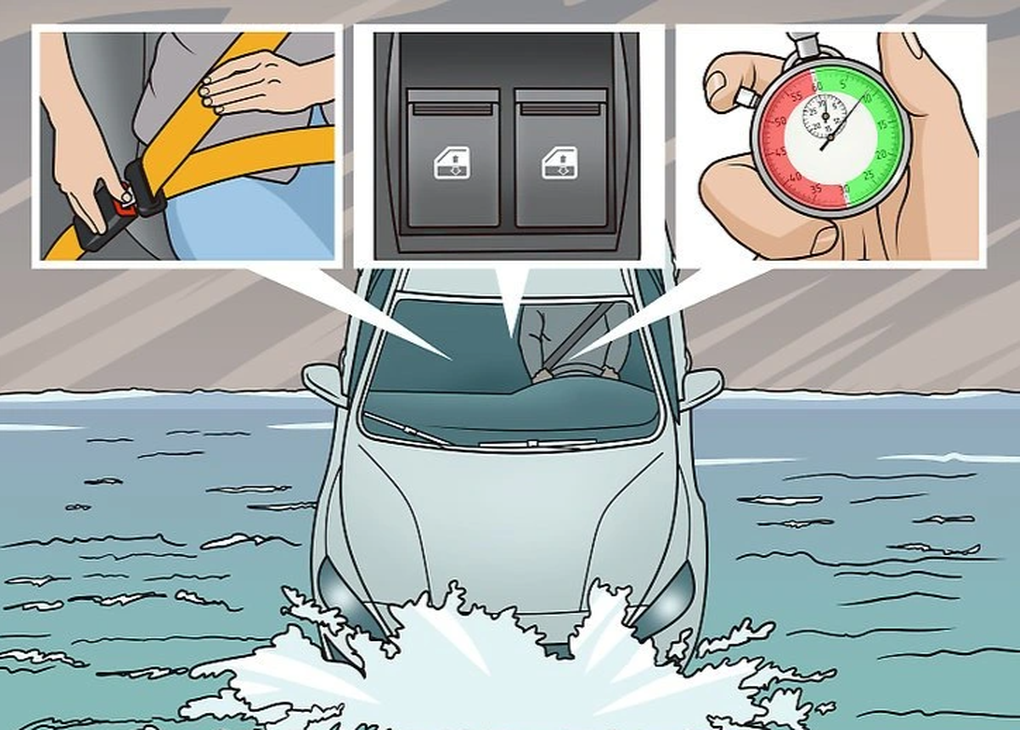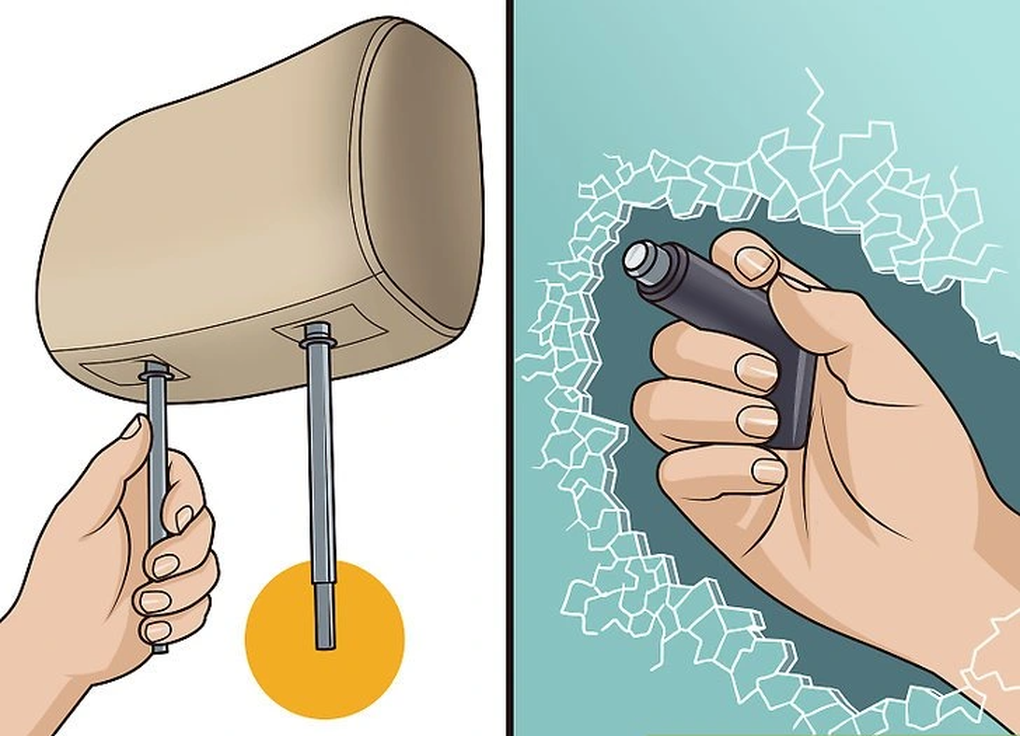Any car accident is scary, but being trapped in a sinking car is extremely terrifying. Fortunately, the driver and passengers still have a chance to escape a sinking car if they stay calm and act quickly.
Many studies show that before sinking, most cars will float on the water surface for 30-120 seconds (depending on the weight of the car). This is the ‘golden’ time for the driver to save themselves and the passengers.
According to Dr. Gordon Giesbrecht, a Canadian expert in underwater emergency situations, in car accidents involving submersion in water, the essential priority actions are: unfastening the seatbelt, opening the window, or breaking the glass, and exiting the vehicle (children first, then adults).
Unfasten Seatbelt
Seatbelts increase survival chances during collisions, but when a car falls into water or has physical impacts, the locking mechanism may jam, meaning the seatbelt might not release when pressing the red button as usual.

At this point, having a seatbelt cutter can make a difference between life and death.
Opening or Breaking the Window
When a car falls into the water, the car’s electrical system only operates for about 3 minutes before sinking completely. Thus, after unfastening the seatbelt, immediately lower the windows (or sunroof if available).
If the car is already sinking, opening the main door is nearly impossible due to the water pressure. The main door can only be opened when the pressure inside and outside the car is balanced, meaning the water has filled inside the car.
Attempting to open and close the door (if possible) will cause water to rush in, sinking the car faster.

In case the electrical system cannot open the window, use heavy and pointed objects to break the driver’s window. For instance, a car key, pliers, screwdriver, use your feet, or even high-heeled shoes… Ideally, keep a specialized hammer (costing around 100,000 VND, including a seatbelt cutter, flashlight, phone charger…) inside the car.
It’s better to break the side or rear windows because the front windshield is the safest with several layers bonded with professional adhesive. Some cars have sunroofs, which are also easier to escape or break.
If you cannot break the side windows, stay calm until the water level reaches chest height and take a deep breath. Then, wait for the water to fill inside the car. At this point, with the pressure balanced inside and outside the car, opening and closing the door to escape will be easier.
Exiting the Vehicle
Once you’ve opened/broken the window or managed to open the main door, the first thing to do is to get children out. Signal for the child to take a deep breath beforehand. If the child can swim, try to get the child as high up as possible; if not, try to get the child to hold onto something that can float before getting out.
When exiting the car, the first thing to do is to find a way to reach the water surface as soon as possible. Swim towards light or follow the direction of rising air bubbles.
In summary, what needs to be done is good preparation and keeping calm in the event of an emergency. Firstly, immediately unfasten the seatbelt when the car plunges into the water, then open or break the window, and self-rescue, as well as assist other passengers, especially children.
Prepare for a car falling into the water by equipping yourself with a seatbelt cutter and a window-breaking tool in the car, within reach of the driver. As shown in the clip above, with good mental preparation and equipment, it only takes 20 seconds to escape from a car plunging into the water.”












